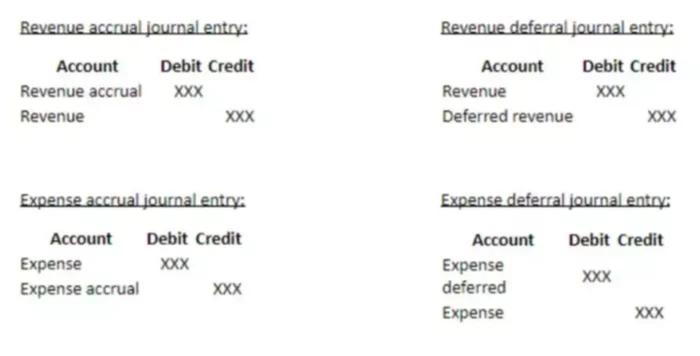Then we produce the trial balance by listing each closing balance from the ledger accounts as either a debit or a credit balance. We need to work out the balance on each of these accounts in order to compile the trial balance. Similarly, a closing balance for a ledger account does not always get carried forward. Only continuous ledger accounts such as accruals, cash accounts, etc. are carried forward to the next accounting cycles.

From the trial balance we can see that the total of debit balances equals the total of credit balances. This demonstrates for every transaction we have followed the basic principle of double-entry bookkeeping – ‘ for every debit there is a credit ’. Trial balances can be balanced with an adjusting entry for the differences that show a credit or a debit balance for a trial balance account. The total amounts from a ledger account for a company should always balance. These closing balances are carried forward to the next accounting period as brought forward balances.
Balance Carried Forward C/F – Definition
Similar to the B/F, a balance C/F also represents the balance for one accounting period or one page of the ledger book. In bookkeeping, Balance B/F and Balance C/F are a couple of accounting jargon used while journalizing. They play a role in totalling and carrying forward balances from one page of the journal book to the next one. Carried Forward (CF) is a term that is often used in accounting and financial statements to refer to the transfer of an amount from one accounting period to the next. CF is often used to refer to carried-forward amounts in financial statements.
A trial balance is a list of all the balances in the nominal ledger accounts. It serves as a check to ensure that for every transaction, a debit recorded in one ledger account has been matched with a credit in another. If the double entry has been carried out, the total of the debit balances should always equal the total of the credit balances. Furthermore, a trial balance forms the basis for the preparation of the main financial statements, the balance sheet and the profit and loss account. In order to prepare a trial balance, we first need to complete or ‘balance off ’ the ledger accounts.

Balance B/F & Balance C/F are used in journal books whereas Balance B/D & Balance C/D are used with ledger accounts. Next, the accountant will enter the relevant transactions on a trial balance’s debit and credit sides. Balance brought down (B/D) is an alternative accounting term used for the balance brought forward B/F. It is the account balance that is carried down to the next ledger page or the next accounting cycle.
Example – Balance B\F
It is the carrying balance for a ledger account from the previous accounting period. Carried forward and brought balances to ensure the accuracy of the ledger accounts of a company. The closing balance is the debit/credit or positive/negative balance of each trial account in a ledger. Opening balance refers to the debit or credit balance brought forward from the previous accounting periods. Opening balance can also be a new line item in a new ledger account or at the inception of a business.
- This adjusting balance is the carrying forward or carried down the balance of that trial balance account.
- Also, these figures are helpful in closing entries for one accounting period, specifically at the year-end closing.
- If the credit side of a trial balance is greater than the debit side, it will need an adjusting entry on the debit side and vice versa.
- We need to work out the balance on each of these accounts in order to compile the trial balance.
For instance, a cash account must be balanced daily after closing business operations. Making a list of the above balances brought down produces a trial balance as follows. It means the balance C/F and B/F play an important role in the accounting accuracy of the financial statements of a company. Finally, when the accountant begins a new ledger page or a new accounting cycle, it will enter the same amount as brought forward B/F balance. When ABC company begins working for the new day or enters new entries to this cash account, the balance C/F becomes the balance B/F.
Top 6 Richest Accountants In The World
This adjusting balance is the carrying forward or carried down the balance of that trial balance account. The closing balance of a trial balance account can be carried forward or carried down to the next page. The first step is to determine whether the account balance needs to be carried down or closed down permanently. It is written at the top of trial balances in a T-account or any other form of journal entry.

ABC Company will enter subsequent entries for the next account activities as and when performed. The carried forward balance may change from credit or debit balance or vice versa from one accounting period to the next. Apparently, the closing or balancing figure of a trial balance does not seem a difficult entry.
Take your learning further
C/F and B/F balances are also important when an accounting setup transfers from one system to another. Also, these figures are helpful in closing entries for one accounting period, specifically at the year-end closing. Carried forward C/F balance and brought forward B/F balance plays an integral part in the consistency of an accounting system. These figures ensure that the ledger books of a company are accurate and consistent. Now we will consider another working example that shows the ledger balance of a company ABC for one accounting period. Similarly, balance carried down C/D is an alternative accounting term used for the balance carried forward C/F.
- Making a list of the above balances brought down produces a trial balance as follows.
- It is the carrying balance for a ledger account from the previous accounting period.
- To understand balance b/f and balance c/f begin with understanding carried forward first and brought forward next.
- The closing balance of a trial balance account can be carried forward or carried down to the next page.
- It is the account balance that is carried down to the next ledger page or the next accounting cycle.
However, these are important figures when closing accounts or reconciling account balances for a business. Consequently from the above example when Unreal Corp. moves to the next page of its journal book it will bring both the closing debit and credit balance from the previous page. Using the rules above we can now balance off all of Edgar Edwards’ nominal ledger accounts starting with the bank account. Suppose a company ABC has the following cash account balance in its ledger book. Balance B/F & Balance C/F are used in the journal book, not in the ledger accounts.
The journal book maintained by a business includes many journal entries, due to a large number of entries multiple pages of the journal book are used. TrendingAccounting is a top small business blog that shares information about accounting, bookkeeping, tax, finance, and auditing. Making the decision to study can be a big step, which is why you’ll want a trusted University. We’ve pioneered distance learning for over 50 years, bringing university to you wherever you are so you can fit study around your life. The computer and bank loan accounts have single entries on one side, like the furniture account, so they need to be treated in the same way.
When ABC company will close this T-account, it will need to balance both sides. The adjusting entry will be the balance carried forward from this cash account for the next accounting cycle. In accounting, every trial balance or ledger account has a closing balance. If that account needs to be carried forward to the next accounting period, the ending balance must not be closed there. If the credit side of a trial balance is greater than the debit side, it will need an adjusting entry on the debit side and vice versa.
Anyone can learn for free on OpenLearn, but signing-up will give you access to your personal learning profile and record of achievements that you earn while you study. Modern accounting software may not show the abbreviations of balance B/F and C/F. The abbreviation or notation “B/F” refers to “Brought Forward” in accounting terms. The balance pushed forward from the current page to the next page is termed as “Balance C/F”. To understand balance b/f and balance c/f begin with understanding carried forward first and brought forward next.

